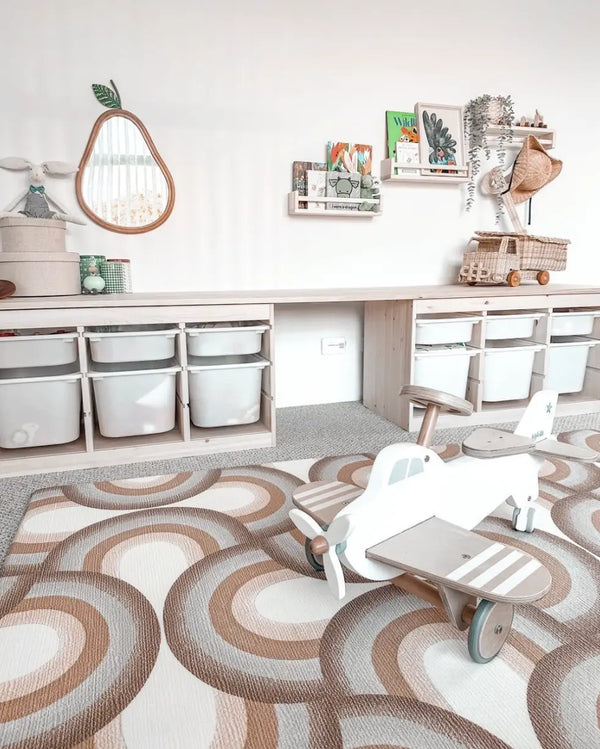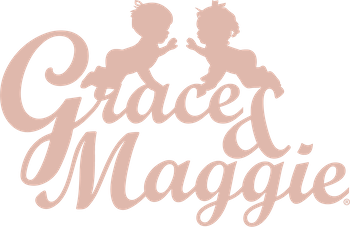
Practical Toy Storage Ideas Available in Australia
How do I store all these toys? It’s easy to become overwhelmed with all the ‘stuff’ that comes along with having children.
Toys are just one aspect that so easily can get out of control - yet again you can easily take back that power by getting organised. We have a list of toy storage hacks just for you.
As a parent, it's common for your living room to be taken over by your child's toys. It can be frustrating and overwhelming to constantly step over and clean up after them.
Thankfully, there are many different toy storage organisers on the market that can help you regain control of your space.

From handy cubbies to stylish baskets, there is a storage solution that fits any budget and decor style.
These organisers not only help keep your living room tidy, but also make it easier for your child to access and play with their toys.
By encouraging them to put away their toys after playtime, you're teaching them good habits and keeping your home clutter-free.
So don't despair if your living room looks like a toy-filled playroom disaster - toy storage organisers are here to save the day.
How do you organise toys in a shared room?
Organising toys in a shared room can be a challenge, but with a few strategies, it can be done efficiently.
STORAGE BINS AND BASKETS

One hack is to use storage bins or baskets to categorise toys. Label each bin with a specific category, such as Lego, stuffed animals, or board games.

Ezy Storage Brickor Deep Grey Lidded Basket
This will make it easier for kids to find and put away their toys in the designated bins.
Another hack is to use shelving units or bookcases to display and store toys.

2pc Boxsweden 22x31.5cm/6L Wheelie Bin Container Storage Organiser Assorted
This not only creates a visually appealing space but also allows for easy access to toys. You can use colourful bins or baskets on the shelves to further categorise and store smaller toys. Additionally, consider implementing a rotating toy system.
TOY ROTATION
This involves storing some toys out of sight and only keeping a few toys available at a time.
Every few weeks or months, rotate the toys to provide variety and keep the room from becoming cluttered.
For older children
Iinvolve them in the organisation process. Teach them the importance of keeping their toys organised and designate specific cleanup times. By involving them in the process, they will feel a sense of ownership and responsibility for their toys and the shared room. By implementing these hacks and maintaining consistency, you can create an organised and functional shared room for toys.
For younger children
Do the toy rotating when they are asleep or in childcare. As they won't understand, and it might just cause tantrums and a bit mess if you do it whilst they are awake.
How do you organise toys without a playroom?
Organising toys without a playroom can be a challenge, but it is definitely possible.
STORAGE BINS OR BASKETS

One option is to utilise storage bins or baskets that can be easily tucked away or stacked in a closet or under the bed.
SHELVING UNITS

You can also use shelving units or bookcases to create designated areas for specific types of toys.

Over the Door Basket Organiser
Another idea is to use hanging organisers, such as over-the-door shoe organisers or hanging baskets, to maximise vertical space.

LABELLED CONTAINERS

Boxsweden 30 x 24.5 x 25.5cm White 3 Layer Storage Drawer
Additionally, using clear, labelled containers can help keep toys organised and make it easier for children to find what they're looking for.

Encourage your child to participate in the organisation process and teach them how to clean up after themselves, as this will help maintain a tidy space.
What are examples of toy rotation?
Toy rotation is a method used by parents to keep their child's toys fresh and exciting.
It involves periodically taking a few toys out of rotation and replacing them with different toys. This helps to prevent boredom and keeps the child engaged and interested in their toys.
Anything you don't get out of rotation or use within 6 months, you should think about selling or donating.
EXAMPLES OF TOY ROTATION
Here are a few examples of how toy rotation can be implemented:
- Monthly rotation: Divide your child's toys into different categories, such as building blocks, puzzles, imaginative play, stuffed animals, crafts, sensory play, sporting equiptment, etc. Each month, pack away a few toys from each category and replace them with toys from the next category. This way, your child gets to explore different types of toys every month.
- Weekly rotation: For younger children who have a shorter attention span, a weekly rotation might work better. Choose a few toys each week to put aside and replace them with different toys. This keeps the toys fresh and prevents overstimulation.
- Seasonal rotation: Another approach is to rotate toys based on the season. For example, during the summer months, you can have outdoor toys like sandboxes and water play equipment readily available. In the winter, switch to indoor toys like board games and puzzles.
- Special occasion rotation: Consider rotating toys based on special occasions or holidays. For example, during birthdays or holidays, you can introduce new toys and put some older ones aside temporarily. This adds excitement and novelty to the toys.
Remember, the key is to create variety and keep the toys interesting for your child. By rotating toys, you can help promote their imagination, creativity, and keep them engaged in playtime.
It's always a good time to try to rotate toys just after a holiday or birthday where new toys are coming into the mix.
What age should you start toy rotation?
Toy rotation can be beneficial for children of all ages, but the ideal age to start toy rotation is around 1-2 years old. At this age, children are beginning to develop their cognitive skills and can start to benefit from having a variety of toys to explore and play with.
Toy rotation helps to keep things fresh and exciting for children, as well as encourages creativity and imagination. It also helps to reduce clutter and overwhelm, as children only have access to a limited number of toys at a time.
However, every child is different, so it's important to consider their individual development and interests when deciding when to start toy rotation.
Organising a child's toy room has numerous benefits

Clean & Tidy - promotes cleanliness and tidiness. A well-organised toy room teaches children the importance of keeping their belongings in order and helps them develop good habits from an early age.
More Enjoyable - an organised toy room allows for easier access and retrieval of toys, making playtime more enjoyable and efficient. It saves time and frustration for both children and parents.
Increases Concentration - A clutter-free environment reduces distractions and can improve focus and concentration during play.
Promotes creativity - An organised toy room also promotes creativity and imagination, as children can easily find and utilise their toys in various ways.
Teaches responsibility - Organising a child's toy room helps teach responsibility, as children learn to take care of their toys and properly put them away after use.
Written by Laura Agrimi, mother of 2 and owner of Grace & Maggie.
Online store - Open 24 hours
orders@graceandmaggie.com.au
PO Box 2852, Cheltenham, VIC 3192
Melbourne, Victoria, Australia
 Shop Now with Afterpay
Shop Now with Afterpay 